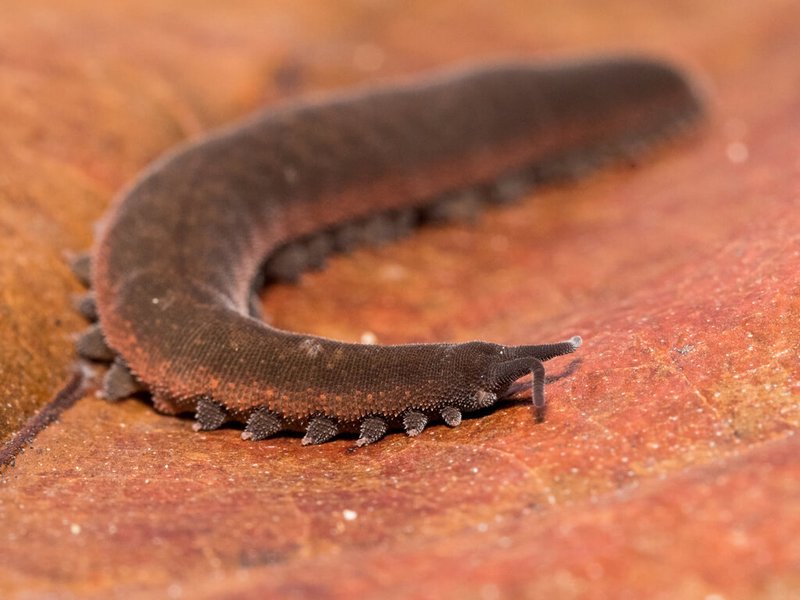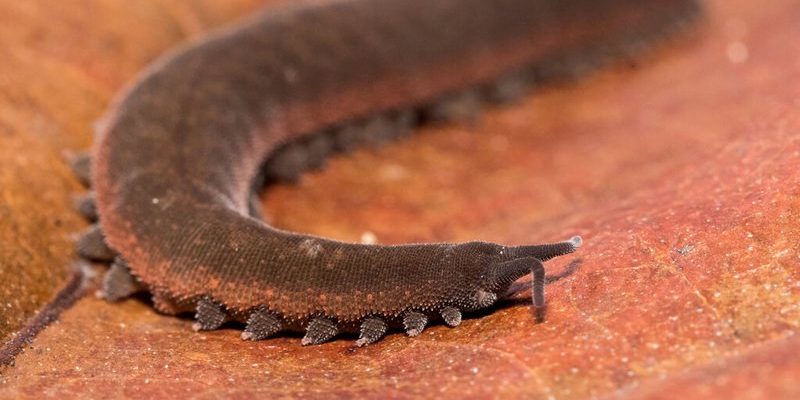
Now, before you start picturing this creature in a wool sweater (because, really, who wouldn’t want to see that?), let’s get into the nitty-gritty of what *Onychophora* means and how scientists pinpoint velvet worms within the vast tree of life. It’s all about understanding their anatomy, habitat, and genetic makeup. Let’s explore how these slimy, squishy animals fit into the broader categories of life on Earth.
What Are Velvet Worms?
Velvet worms, scientifically known as *Onychophora*, are soft-bodied invertebrates that can be found mainly in tropical and subtropical regions. They are often overlooked due to their elusive nature, blending seamlessly into their surroundings. Picture them as the shy cousins of more common creatures; they thrive in moist environments like rainforest floors, hidden beneath leaves and logs.
These worms can range in size from just a few centimeters to up to 15 centimeters long. Their bodies are covered in a velvety exterior—a trait that’s actually where their name comes from. A key feature is the presence of multiple pairs of leg-like structures called “lobopods,” which help them navigate through their habitats. Think of these lobopods like tiny, clumsy legs that they use to crawl around in search of food.
You might be wondering, what do they eat? Velvet worms are predatory creatures. They hunt down insects and other small invertebrates, using a fascinating method. When they spot potential dinner, they shoot a sticky, glue-like slime from specialized glands, immobilizing their prey. It’s truly like watching a tiny superhero in action!
The Phylum Classification: What Does It Mean?
Every living organism is placed into a classification system called taxonomy. Just like organizing your closet into shirts, pants, and shoes, scientists group organisms based on shared characteristics. The phylum *Onychophora* is one of these main categories. It tells us that velvet worms share certain defining traits that set them apart from other animals.
The classification hierarchy goes like this: it starts from broad categories and narrows down to specific groups. The major levels are domain, kingdom, phylum, class, order, family, genus, and species. In the case of velvet worms, they belong to the phylum *Onychophora*, which means they share characteristics like a soft body and segmented limbs with other organisms in this group.
Interestingly, the relationship of velvet worms to other animals can be surprising. They are more closely related to arthropods, like spiders and insects, than to other worm-like creatures. This connection is pivotal to understanding their evolutionary past and helps scientists make sense of their unique anatomy and behavior.
Key Characteristics of Velvet Worms
To truly grasp what makes velvet worms special, we have to look at their key characteristics more closely. Here’s a breakdown of the traits that classify them within the phylum *Onychophora*:
- Soft, Moist Skin: Their velvety texture is not just for show. This skin helps them retain moisture, which is critical for their survival. In their humid rainforest homes, it’s a necessity!
- Segmented Body: Just like earthworms, velvet worms have bodies divided into segments. This segmentation allows for flexible movement, which is essential when navigating through cluttered environments.
- Unique Legs: Each velvet worm has pairs of stubby legs that aid in locomotion. These lobopods are distinct and serve multiple functions, including walking and grabbing onto surfaces.
- Slime Production: The slime they produce is fascinating. It serves not only as a weapon for capturing prey but also as a means to protect themselves from predators.
By understanding these characteristics, we can appreciate why scientists place velvet worms in their own phylum. They truly have a blend of traits that make them stand out in the animal kingdom.
How Scientists Classify Them: The Process
The classification of velvet worms doesn’t happen on a whim; it’s a meticulous process based on thorough study. Scientists look at several factors when determining how to classify these organisms.
First, they examine the anatomical features of these creatures. Their distinct body shapes, the arrangement of legs, and the structure of their slime glands all play a role in identifying where they fit in the taxonomy tree. By comparing these features with those of other similar organisms, scientists can point out similarities and differences that lead to a better understanding of lineage.
Next, genetic analysis comes into play. DNA sequencing has revolutionized how scientists classify organisms. With modern technology, researchers can compare the genetic material of velvet worms to other species. This allows them to trace evolutionary relationships that may not be visible through physical characteristics alone.
Lastly, ecological factors can influence classification. Where a species lives and how it interacts with its environment can provide essential clues. Velvet worms are typically found in damp, shaded areas, which allows researchers to gather data on their habitat preferences and behaviors, further solidifying their classification.
The Importance of Classifying Velvet Worms
So, why should we care about how scientists classify velvet worms? Here’s the thing: classification helps us understand biodiversity and evolution. By studying velvet worms and their unique characteristics, researchers can gain insights into how life on Earth has evolved over millions of years.
Moreover, understanding where they fit in the ecosystem can help conservationists protect their habitats. Velvet worms are considered bioindicators, meaning their presence can indicate the health of an ecosystem. If velvet worms start to decline, it might suggest something is wrong with their environment, prompting further investigation.
Lastly, classification also fuels curiosity. Learning about these unique creatures encourages interest in biology and ecology, appealing to budding scientists and nature enthusiasts alike. Plus, when you know what makes velvet worms tick, you can appreciate their role in the grand tapestry of life even more.
Final Thoughts
Navigating the classification of velvet worms, or *Onychophora*, can feel like wandering through a dense forest full of information. But consider this your map to understanding these quirky creatures. They might be soft, slimy, and somewhat mysterious, but they hold vital roles in our ecosystems and fascinating stories of evolutionary history.
As you ponder your next stroll in the woods or even your backyard, take a moment to appreciate the little things underfoot. Perhaps a velvet worm is waiting to show off its incredible adaptations! Understanding how scientists classify these creatures not only fosters a deeper appreciation for biodiversity but also reminds us that there’s always more to discover about the world around us.

